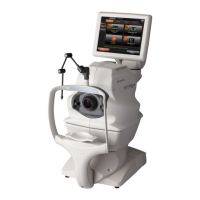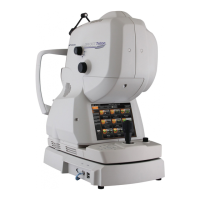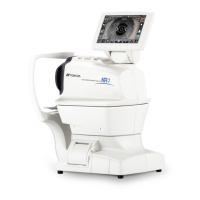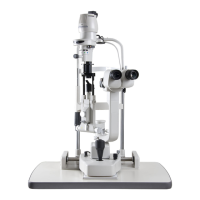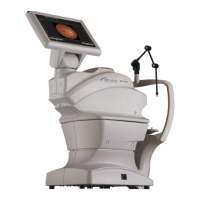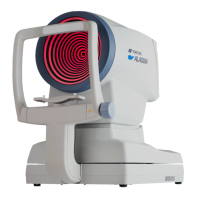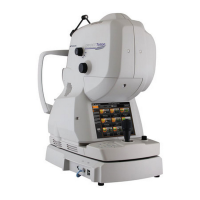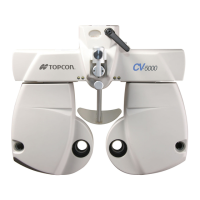7
SAFETY CAUTIONS
CAUTIONS
Icon Prevention item Page
The necessary capacity of memory and hard disk are changed depending
on the CPU in the personal computer or environment.
10
If the number of "Thread" in CPU is beyond 4, the processing may be
delayed. Reduce the number of "Thread" to use this software.
10
When the object to be displayed is changed, start this software again. 18
When entering the patient ID through the 3D OCT-1, a bar code reader, a
card reader, IMAGEnet, Multi-Viewer, etc., you must use only the alphabet,
numerals and "-". Moreover, the following symbols cannot be used for the
patient ID.
" \ / : 'Space' * ? . <> | _ ! # $ %
If you use a patient ID which does not meet the above conditions, the report
cannot be output correctly from time to time.
25
When the photography data is displayed, "Normative Date" is displayed
according to the patient's age at the photography date. However, it is limited
as mentioned below.
• When the patient is under 19, "Normative Data" for the age of 20 is dis-
played as reference.
• When the patient is over 81 years old, "Normative Data" for the age of 80
is displayed as reference.
27
When clicking the [Capture] button, sometimes the message "Ocular optical
information value exceeded the compensated limitation. Default value shall
apply." is displayed.
In this case, access "Data Management" again. Click the [Edit patient infor-
mation]" button and then the [Ocular Param.] button to correct "Ocular
Parameters".
28
Sometimes the analysis function is not normally finished. In this case, the
thumbnail is marked with "Fail".
62
For "B-2: Filter", the data of the image being displayed are used and so you
cannot change the values of "Filter" directly.
83
The Measure Image function is based on the theoretical Gullstrand eye
model. If the parameters of the actual patient's eye, such as the diopter or
axial length, are different from the Gullstrand eye model, the measurement
results may be different from the length and size in reality. The clinician will
be solely responsible for the diagnoses and treatments based on the mea-
surement results.
90
When modifying the data in optic disc analysis (refer to "4.2. Analyzing the
Optic Disc" (P.132), the circle center is calculated again.
94
